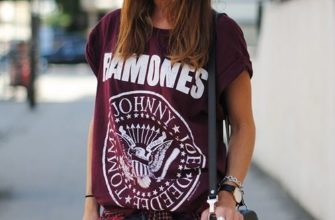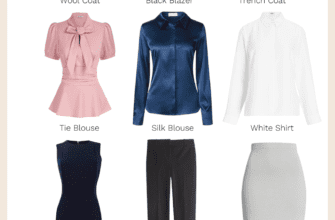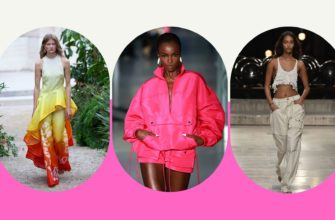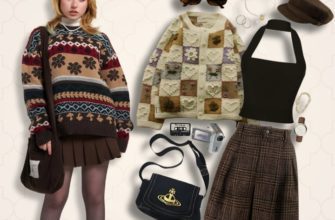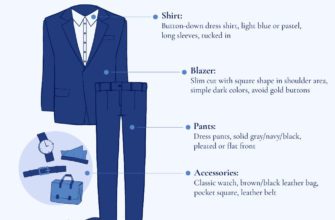When it comes to professional attire, striking the perfect balance between style and sophistication can be quite the challenge. Whether you’re aiming to exude professionalism in the workplace or attending a business casual event, understanding the nuances of this dress code is essential. Unlocking the secret to mastering the art of business casual can elevate your professional appearance and boost your confidence, leaving a lasting impression on colleagues and clients alike.
Embracing the world of business casual means adopting a wardrobe that seamlessly blends professionalism with a touch of relaxed elegance. Gone are the days of strictly formal office attire; business casual allows for more flexibility while still maintaining a polished image. By choosing clothing items strategically, you can effortlessly express your personal style while adhering to the norms of a professional environment.
Revolutionize Your Health & Lifestyle!
Dive into the world of Ketogenic Diet. Learn how to lose weight effectively while enjoying your meals. It's not just a diet; it's a lifestyle change.
Learn MoreEmphasizing the importance of fabric choices and fits is crucial for both men and women in achieving a well-executed business casual look. Opting for high-quality materials such as cotton, wool, or linen can instantly elevate your outfits, exuding an air of refinement and sophistication. Pairing these fabrics with well-tailored silhouettes, whether it be a slim-fit blazer or a pencil skirt, helps create a streamlined and professional appearance that is sure to impress.
- Understanding the Basics
- What is Business Casual?
- Dress Code Expectations
- Building a Versatile Dress Code Wardrobe
- Key Pieces for Men
- Key Pieces for Women
- Choosing the Right Colors and Fabrics
- Color Palette for Business Casual
- Appropriate Fabrics for Business Casual Attire
- Styling Business Casual Looks
- Accessorizing for Men
- Questions and answers
Understanding the Basics
In the realm of professional attire, having a firm grasp on the fundamentals is essential. This section aims to provide an in-depth understanding of the core principles underlying business casual style. By exploring the essential elements, dos and don’ts, and key considerations, both men and women can develop a solid foundation for navigating this dress code with confidence.
| Key Elements | Dos | Don’ts |
|---|---|---|
| Appropriate Attire | Choose clothing that balances professionalism and comfort while reflecting personal style. | Avoid overly casual or formal clothing, such as t-shirts, shorts, or evening gowns. |
| Fit | Opt for well-tailored garments that flatter the body shape without being excessively tight or loose. | Avoid ill-fitting clothing that is baggy, too tight, or reveals too much skin. |
| Color Palette | Select a color scheme that suits the occasion and complements skin tone and hair color. | Avoid overwhelming or clashing color combinations that may distract or appear unprofessional. |
| Accessories | Choose accessories that enhance the overall outfit and project an air of sophistication. | Avoid excessive or flashy accessories that may overpower the attire or distract from the professional image. |
While these guidelines offer a starting point, it’s essential to consider the specific environment, industry, and cultural norms when interpreting and implementing the basics of business casual attire. By understanding and adapting the fundamental principles, both men and women can confidently navigate the world of business casual fashion while exuding professionalism and style.
What is Business Casual?
:max_bytes(150000):strip_icc()/studio-portrait-of-a-smiling-young-man-in-a-red-jacket-dv1912055-5751e7715f9b5892e8a2c304.jpg)
In the professional world, there is a dress code known as Business Casual that signifies a more relaxed yet still polished approach to attire. This dress code is often required in workplaces that value professionalism and want to maintain a comfortable and approachable environment for employees and clients. Business casual allows individuals to express their personal style while still conforming to a certain level of professionalism.
In essence, business casual is a dress code that falls between formal business attire and casual wear. It strikes a balance between the professionalism required in a corporate setting and the comfort and ease of casual clothing. When dressing in a business casual manner, one should aim to look neat, put-together, and respectful, while also allowing for individuality and freedom of expression within the confines of appropriate office wear.
For men, business casual typically includes dress slacks, tailored shirts, blazers, and leather shoes, while avoiding items like jeans, t-shirts, and sneakers. Women, on the other hand, can opt for a range of attire including dresses, skirts, blouses, tailored pants, and tasteful accessories. Colors and patterns can be added to outfits, but it is still important to maintain a professional appearance.
Understanding the nuances of business casual is essential for maintaining a polished and appropriate appearance in professional settings. By adhering to this dress code, individuals can exude confidence, competence, and professionalism, while still feeling comfortable and stylish in their attire.
| Key Points: |
|---|
| – Business casual is a dress code that falls between formal business attire and casual wear. |
| – It allows for a more relaxed and approachable environment in professional settings. |
| – Men can wear tailored shirts, dress slacks, blazers, and leather shoes in business casual. |
| – Women have a wider range of options, including dresses, skirts, blouses, and tailored pants. |
| – Maintaining professionalism while expressing personal style is key in business casual. |
Dress Code Expectations
The expectations surrounding dress codes can vary significantly depending on the professional environment and the nature of the business. This section explores the essential considerations when it comes to dressing appropriately in a business casual setting, offering insights and suggestions for both men and women.
In business casual attire, dressing professionally while maintaining a level of comfort is key. Men and women should opt for clothing that is neat, presentable, and reflects a sense of style and professionalism. It is important to strike a balance between looking polished and relaxed, without sacrificing professionalism.
For men, business casual typically calls for tailored trousers or khakis in neutral colors, paired with a collared shirt or a professional polo shirt. Avoid wearing jeans or shorts, and instead opt for dress shoes or loafers to complete the ensemble.
Women, on the other hand, have a variety of options within the business casual spectrum. They can choose to wear trousers, skirts, or dresses, complemented by blouses, sweaters, or tailored tops. It is important to ensure that the chosen outfit is modest and not overly revealing. Closed-toe shoes or dressy flats are suitable footwear choices for business casual occasions.
While it is essential to adhere to dress code expectations, it is equally important to consider the culture and atmosphere of the specific workplace. Some organizations may have a more relaxed interpretation of business casual, allowing for more personal expression in clothing choices. However, when in doubt, it is always better to err on the side of caution and dress more formally.
Lastly, remember that personal grooming, such as maintaining a well-groomed appearance, clean nails, and minimal accessories, is equally crucial in maintaining a professional image in a business casual environment. By dressing appropriately and paying attention to small details, individuals can confidently navigate the world of business casual attire and make a positive impression in their professional endeavors.
Building a Versatile Dress Code Wardrobe
Creating an appropriate wardrobe for a professional setting can be a daunting task, particularly when the dress code calls for a business casual attire. This section aims to guide both men and women in building a well-rounded wardrobe that effortlessly blends professionalism with personal style.
When assembling a business casual wardrobe, it’s crucial to focus on versatility. Opt for timeless pieces that can be mixed and matched to create various stylish outfits suitable for different occasions. Instead of cluttering your closet with trendy items, invest in classic garments that will stand the test of time.
For men, a good starting point is a collection of tailored shirts in solid colors or subtle patterns. These can be paired with chinos or dress pants for a sophisticated yet relaxed look. Additionally, blazers and sport coats can be layered over shirts for a more polished appearance. Accessories such as ties, pocket squares, and belts can add personality and sophistication to an outfit.
Women can begin by acquiring a selection of well-fitting blouses and tops in versatile colors and prints. These can be paired with tailored trousers, skirts, or dresses to create a range of professional outfits. Blazers and cardigans can provide an extra layer of polish, while accessories like statement jewelry and scarves can elevate the overall look.
When building a business casual wardrobe, it’s important to pay attention to fabric choices. Opt for high-quality materials that not only look polished but also offer comfort throughout the day. Natural fibers like cotton, wool, and silk are excellent choices as they provide breathability and durability.
| Essential Pieces for Men | Essential Pieces for Women |
|---|---|
| Tailored shirts | Blouses and tops |
| Chinos or dress pants | Tailored trousers or skirts |
| Blazers and sport coats | Blazers and cardigans |
| Ties, pocket squares, and belts | Statement jewelry and scarves |
Remember, a business casual wardrobe should reflect professionalism, personal style, and comfort. Don’t be afraid to experiment and find the perfect balance that makes you feel confident and ready to conquer any professional setting.
Key Pieces for Men
In this section, we will explore the essential clothing items that are crucial for achieving a stylish and appropriate business casual look. These key pieces will help you strike the right balance between professionalism and comfort, allowing you to effortlessly navigate the business world.
One of the key pieces for men in the business casual wardrobe is a well-fitting blazer. This versatile garment can instantly elevate any outfit and add a touch of sophistication. Look for blazers in neutral colors like navy, charcoal, or gray, as they can be easily paired with a variety of shirts and trousers. Opt for high-quality fabrics and pay attention to details like the fit of the shoulders and the length of the sleeves.
Another essential item for men is a collection of dress shirts in different colors and patterns. Crisp and tailored shirts are a must-have for any business casual wardrobe. Stick to classic colors like white or light blue for a timeless look, or experiment with subtle patterns like stripes or checks for added flair. Ensure that the shirts are well-pressed and properly fitted to maintain a polished appearance.
When it comes to bottoms, chinos are a fantastic choice for men in a business casual setting. These lightweight trousers strike the perfect balance between comfort and professionalism. Opt for neutral shades like khaki, navy, or olive, as they can be easily paired with a variety of tops. Make sure the chinos fit well and are neither too loose nor too tight.
For footwear, invest in a good pair of leather dress shoes. Oxfords or brogues in black or brown are classic options that can complement a wide range of business casual outfits. Remember to keep them polished and in good condition to make a favorable impression.
Accessories can also play a significant role in completing your business casual look. Consider adding a stylish belt, a subtle tie, or a sophisticated watch to elevate your outfit and showcase your attention to detail. However, be mindful of keeping accessories minimal and understated to maintain a professional appearance.
| Key Pieces for Men |
|---|
| Well-fitting blazer |
| Dress shirts in different colors and patterns |
| Chinos in neutral shades |
| Leather dress shoes |
| Stylish accessories (belt, tie, watch, etc.) |
Key Pieces for Women

Essential wardrobe elements to embrace the professional yet relaxed atmosphere of business casual attire
| Item | Description |
|---|---|
| Blazer | A well-fitted blazer adds structure and instantly elevates any outfit. Opt for neutral colors like navy or black. |
| Button-down shirt | A classic button-down shirt in crisp cotton fabric is versatile and can be layered or worn alone. |
| Blouse | A feminine blouse with delicate details or patterns can bring elegance and sophistication to the overall look. |
| Pencil skirt | A tailored pencil skirt that falls just above or below the knee exudes professionalism and style. |
| Trousers | Well-tailored trousers in flattering cuts and neutral shades are a must-have for any business casual wardrobe. |
| Ankle pants | Modern and comfortable, ankle pants offer a trendy twist to traditional trousers. |
| Shift dress | A versatile shift dress can be dressed up or down, making it perfect for various business casual occasions. |
| Cardigan | A lightweight cardigan adds a touch of warmth and can be easily paired with other pieces. |
| Loafers | Comfortable and polished, loafers are a great footwear choice to complete a business casual ensemble. |
| Pumps | Classic pumps in neutral tones effortlessly add height and sophistication to any outfit. |
When building a business casual wardrobe, remember to select high-quality pieces that fit well and reflect your personal style. Mix and match these key items to create professional yet stylish looks for the workplace.
Choosing the Right Colors and Fabrics
Creating a polished business casual look involves careful consideration of the colors and fabrics you choose. The right combination can enhance your personal style and leave a lasting impression on others.
When it comes to selecting colors, opt for neutral tones such as gray, navy, black, and white as the foundation of your outfit. These shades provide a timeless appeal and can be easily paired with other colors. Additionally, earthy tones like beige, brown, and olive can add warmth and depth to your attire.
While sticking to a neutral color palette is a safe bet, don’t be afraid to incorporate pops of color in your accessories, such as a vibrant scarf or a bold tie. These small accents can inject personality and visual interest into your business casual ensemble.
Equally important is the choice of fabrics. Opt for high-quality materials that offer both comfort and durability. Natural fibers like cotton, linen, and silk are great options for shirts and blouses as they allow your skin to breathe and ensure a well-groomed appearance.
For bottoms, consider fabrics like wool or a blend of cotton and polyester for trousers and skirts. These fabrics are wrinkle-resistant and can withstand the demands of a busy workday. Additionally, invest in well-tailored pieces that fit you properly, as this can make a significant difference in your overall look.
Remember to take into account the season and your local climate when choosing fabrics. Lightweight and breathable materials are ideal for warmer months, while thicker textiles, such as tweed or cashmere, can provide warmth during cooler seasons.
- Choose neutral tones as the foundation of your outfit, including gray, navy, black, and white.
- Consider incorporating pops of color in your accessories for a touch of personal style.
- Opt for high-quality fabrics like cotton, linen, and silk for shirts and blouses.
- For bottoms, select fabrics such as wool or a cotton/polyester blend that are both wrinkle-resistant and durable.
- Take into account the season and climate when choosing fabrics, opting for breathable materials in warmer months and thicker textiles for cooler seasons.
By carefully selecting the right colors and fabrics for your business casual attire, you can achieve a polished and professional look that reflects your personal style and leaves a lasting impression.
Color Palette for Business Casual
When it comes to dressing in a business casual style, choosing the right colors can make a significant impact on your overall look. The color palette you select can convey professionalism, confidence, and a sense of style. In this section, we will explore different hues, shades, and tones that are suitable for both men and women to achieve a polished business casual appearance.
| Neutral Colors | Earth Tones | Pastel shades |
|---|---|---|
| Black | Khaki | Blush |
| White | Tan | Lavender |
| Gray | Olive | Pale blue |
| Navy | Brown | Mint green |
Neutral colors, such as black, white, and gray, are versatile and timeless choices that blend well with other hues. They exude professionalism and can be the foundation of a business casual outfit. Earth tones, like khaki, tan, and olive, provide a subtle and sophisticated appearance, ideal for a relaxed and approachable look.
For a touch of femininity and softness, pastel shades like blush, lavender, and pale blue can add a refreshing element to your business casual attire. These colors are suitable for a wide range of occasions and can be combined with other neutrals or bolder accents to create a balanced and elegant ensemble.
Remember, the key to building a successful business casual wardrobe lies in selecting a color palette that reflects your personal style, complements your complexion, and sets the right tone for the professional environment you work in. Experiment with different combinations and pay attention to how each color makes you feel and how it enhances your overall appearance.
Appropriate Fabrics for Business Casual Attire
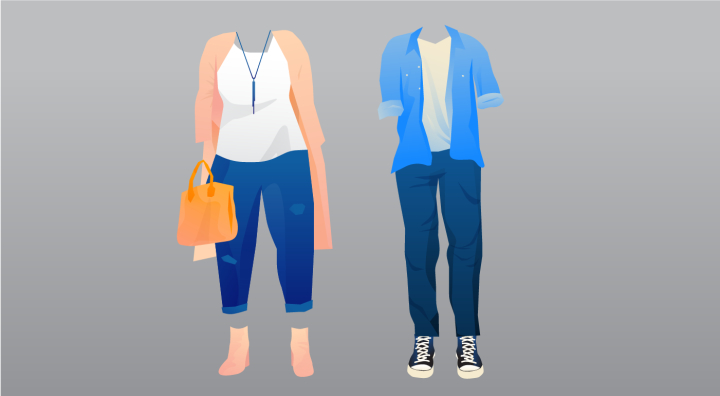
In the realm of professional dressing, it is important to select fabrics that project an appropriate image for the business casual dress code. The choice of fabric can greatly influence the overall appearance and level of formality of an outfit. Careful consideration should be given to the texture, durability, and breathability of the fabrics to ensure they meet the desired criteria of a polished yet relaxed look.
1. Wool: A versatile and timeless fabric, wool can be an excellent choice for business casual attire. It is known for its durability, natural resistance to wrinkles, and breathability. Wool blends are particularly suitable for year-round wear, providing comfort in both warm and cold weather.
2. Cotton: A lightweight and breathable option, cotton is a popular choice for business casual outfits. It offers a crisp and clean appearance and is available in various weaves, such as oxford, poplin, and twill. Cotton fabrics are comfortable to wear and can be easily maintained.
3. Linen: Ideal for warmer climates, linen exudes a relaxed and elegant vibe. It has a natural texture and breathability, making it suitable for a business casual setting. However, it is worth noting that linen tends to wrinkle easily and may require careful maintenance.
4. Silk: While traditionally associated with formal attire, silk can also be incorporated into business casual outfits. It adds a touch of luxury and refinement, especially when used in blouses or accessories. Silk blends can offer added durability and minimize the delicate nature of pure silk.
5. Synthetic blends: Fabrics like polyester, rayon, and nylon can be blended with natural fibers to create business casual attire that is both comfortable and low-maintenance. These blends often offer wrinkle-resistance and stretch, making them suitable for those seeking convenience in their wardrobe.
In conclusion, the choice of fabrics for business casual attire should strike a balance between professionalism and comfort. By selecting appropriate fabrics such as wool, cotton, linen, silk, and synthetic blends, individuals can convey a polished and stylish appearance in a business casual setting.
Styling Business Casual Looks
When it comes to putting together a polished and professional business casual outfit, there are several key elements to consider. The goal is to strike a balance between looking professional and yet still comfortable and approachable. In this section, we will explore various styling tips and ideas that can help you achieve the perfect business casual look.
One of the most important aspects of styling a business casual look is choosing the right clothing pieces. Opt for tailored trousers or skirts in classic colors like black, navy, or gray. Pair them with a blouse or a button-up shirt for a professional touch. You can also experiment with different fabrics and textures to add interest to your outfit.
Accessories play a crucial role in completing a business casual look. A sleek leather belt can help define your waist and add polish to your ensemble. Consider adding a statement watch or subtle jewelry to elevate your outfit. However, it’s important to strike a balance and avoid going overboard with accessories, as they should complement your outfit without overpowering it.
Footwear is another essential element to consider when styling a business casual look. Opt for closed-toe shoes like loafers or pumps for a more formal vibe. If you prefer a slightly more relaxed look, consider wearing dressy flats or ankle boots. Make sure your footwear is clean and well-maintained to elevate your overall appearance.
The final touch to styling a business casual look is paying attention to grooming and personal hygiene. Ensure your hair is neatly styled, and your nails are well-groomed. A fresh and clean appearance is important to maintain a professional image.
| Tips: |
|---|
| – Choose tailored trousers or skirts in classic colors |
| – Pair with a blouse or button-up shirt |
| – Experiment with different fabrics and textures |
| – Add a sleek leather belt for definition |
| – Incorporate subtle accessories to enhance the outfit |
| – Opt for closed-toe shoes or dressy flats |
| – Pay attention to grooming and personal hygiene |
Accessorizing for Men

Enhancing your style with the right accessories can elevate your business casual look to the next level. From understated details to statement pieces, the way you accessorize can create a lasting impression and showcase your unique personality.
When it comes to accessorizing for men in a business casual setting, it’s all about finding the perfect balance between professionalism and individuality. While keeping your attire polished and refined, incorporating subtle accessories can add an extra touch of sophistication to your ensemble.
Start by selecting a classic watch that complements the style and color of your outfit. A timeless timepiece serves not only as a functional accessory but also as a symbol of elegance and attention to detail. Experiment with different strap materials and dial designs to find the perfect match for your personal taste.
Adding a tasteful pocket square to your blazer or suit jacket instantly adds a touch of sophistication and character. Opt for a pocket square in a color or pattern that complements your shirt or tie, allowing it to accentuate your overall look. Fold it neatly for a polished appearance or experiment with different folds for a more creative and unusual twist.
Another essential accessory for men is a sleek leather belt. A well-crafted belt not only serves a functional purpose but can also tie your entire outfit together. Choose a belt that matches the color of your shoes for a cohesive look, opting for a subtle buckle design that adds a touch of elegance without overpowering your ensemble.
Finally, pay attention to your choice of footwear. A pair of quality dress shoes can make all the difference in enhancing your business casual attire. Opt for classic styles such as loafers, brogues, or oxfords, and ensure they are well-maintained and polished to complete your sophisticated look.
Remember, accessorizing is all about expressing your personal style while maintaining professionalism in a business casual environment. By carefully selecting and incorporating the right accessories, you can elevate your outfit and leave a lasting impression of confidence and refinement.
Questions and answers
What is business casual attire?
Business casual attire refers to a dress code that is less formal than traditional business wear, such as suits and ties for men, and pant suits or skirts with blouses for women. It strikes a balance between professionalism and comfort, allowing individuals to express their personal style while still looking appropriate for the workplace.
Can I wear jeans in a business casual setting?
In most cases, jeans are not considered appropriate for a business casual setting. However, some workplaces may have more lenient dress codes that allow for dark-wash, tailored jeans. It is best to consult your company’s dress code policy or observe what other employees are wearing before opting for jeans in a business casual environment.
What are some suitable footwear options for men and women in a business casual environment?
For men, suitable footwear options in a business casual environment include loafers, dress shoes, or polished leather shoes. Women can opt for heels, flats, loafers, or elegant boots. It is important to choose footwear that is clean, polished, and in good condition to maintain a professional appearance.
Are accessories important in business casual attire?
Accessories can play a crucial role in completing a business casual look. For men, a simple watch, belt, and a subtle tie can add a touch of sophistication. Women can accessorize with understated jewelry, scarves, or a tasteful handbag. However, it is important to strike the right balance and avoid excessive or flashy accessories that may detract from a professional image.
How can one dress business casual while still looking stylish?
To dress business casual while maintaining a stylish appearance, individuals can opt for well-fitted clothing made from quality materials. Mixing and matching colors, textures, and patterns can also add visual interest to an outfit. Incorporating trendy accessories or adding a pop of color can personalize the look, but it is important to ensure that the overall ensemble remains polished and professional.
What is business casual attire?
Business casual attire is a dress code that allows for a more relaxed and comfortable style compared to traditional business formal wear, while still maintaining a professional appearance. It typically includes items such as slacks or dress pants, a button-down shirt or blouse, and closed-toe shoes.
Can I wear jeans in a business casual setting?
In most cases, jeans are not considered appropriate attire in a business casual setting. However, some workplaces may have a more relaxed dress code that allows for dark-colored, well-fitting jeans. It’s best to check with your company’s dress code policy to be sure.
Should men wear ties in a business casual environment?
In a business casual environment, ties are generally not required. However, it can depend on the specific workplace and the occasion. If you are unsure, it’s always better to dress slightly more formal and wear a tie, rather than being underdressed.
Are women allowed to wear dresses in a business casual setting?
Yes, women can wear dresses in a business casual setting, as long as they are appropriately styled. Opt for dresses that are knee-length or slightly above the knee, and pair them with a blazer or cardigan for a polished look. It’s important to avoid anything too revealing or overly casual, such as sundresses or maxi dresses.
Can I wear sneakers in a business casual workplace?
In most cases, sneakers are not considered appropriate footwear for a business casual workplace. It’s best to opt for closed-toe shoes such as loafers, oxfords, or dress shoes. However, some workplaces may allow for more casual footwear options, such as clean and stylish sneakers. Check your company’s dress code policy for clarification.



